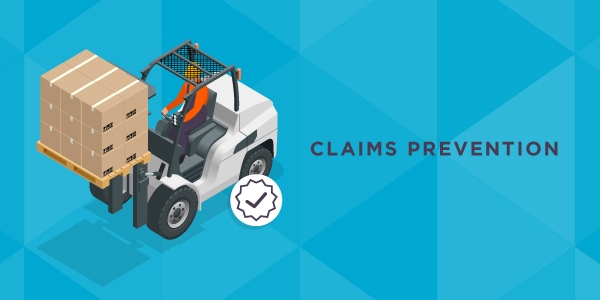
Freight claims are a loss that every business experiences, but that doesn’t mean you can’t minimize how often they occur. Damaged and returned items cost U.S. businesses billions of dollars every year. Only you understand the exact financial impact felt by your business, but it’s safe to say that minimizing freight claims can result in a big cost-saving benefit for you.
It’s equally important to understand how the freight claim process works, how you can avoid common pitfalls, and how you can reduce the overall impact the process has on your bottom line.
The Types of Freight Damage Claims
What types of freight damages are common? There are four different types of freight damage claims, according to the U.S. General Services Administration:
- Visible damage: damage that is readily apparent on the freight being transported.
- Shortage: when only part of the shipment is received. Some, but not all, of the items are missing.
- Concealed damage: when damaged freight or shortages are discovered after the carrier has already dropped off the shipment. Damage is not initially visible and discovered after the shipment is unloaded, un-palletized and the containers or boxes are opened.
- Loss: delivery of the entire shipment did not occur.
How to Limit Freight Claims and Damage
There’s no silver bullet that will allow you to completely eliminate freight damages, but there are some best practices that can considerably reduce the amount of damaged freight your business needs to deal with, no matter how often you send out shipments.
Review Your Packaging
Protecting freight begins with choosing the right type of packaging. It’s a relatively small cost when compared to the entirety of the supply chain, but packaging items properly is possibly one of the most important things you can do to protect freight. You can’t always control what happens to items after they are shipped, but you can prepare them for the worst (should it occur).
Keep these packaging tips in mind:
- Don’t “cheap out”: investing in higher quality shipping materials (foam protection, sturdier boxes, etc.), may come with an upfront cost, but you’ll easily make up the costs with lower damage ratios. Returns, reverse logistics, and the reshipping of items costs money. It’s much less expensive to ship an item once and have it arrive undamaged than it is to have to bring damaged items back, dispose of them, then repackage new items and ship them again.
- Right-size your packaging: use too much packaging material and you’re wasting money. Use too little materials and your damage risks go up. Get the packaging size right so that your costs are optimized, and your damage ratios are low.
- Protect your palletized freight: many items are damaged in transit because they have not been properly protected after they have been palletized. Reanalyze your pallet loading and protection practices to include shrink-wrapping or banding products, crating pallet to fully protect products, utilizing crush cones to minimize the potential of freight being stacked on top of fragile items, and adding fragile stickers on all sides of the finished pallet.
Clear Your Docks
Warehouse dock congestion leads to a whole host of problems, one of which is increased freight damage. When carriers are lining up outside of a facility, warehouse workers are going to move faster in order to load trailers and get them clear of the bays, this means that mistakes will be made, items will become damaged, and pallets/trucks will not always be loaded in the best way possible.
If you need to reduce your freight damage, clear your dock. You’ll see an improvement. Read our quick dock congestion guide here!
Freight Consolidation
PTL shipping can optimize costs and reduce shipping times. While LTL is a great way to ship your product, it involves more handling of the freight. Anytime you have more freight being shifted around on trailers, loaded, unloaded, etc., you’re going to run the risk of damage.
If it’s right for your shipments, freight consolidation can be a better, safer way to move products. Once a consolidated FTL (full truckload) trailer is loaded, it’s not unloaded until it reaches its destination. This can often be the safest way to send freight.
What to Do if You Need to File a Freight Claim
No matter what you do and how well prepared you are, freight damage can be happen. This means that you’ll ultimately have to file a freight claim at some point. When this time comes, be prepared to streamline the process by:
- Being prompt: damage must be assessed and reported immediately. Late damage claims can raise red flags and hinder the process, as their validity can be challenged.
- Being prepared: all documentation relating to the shipment must be included in the damage claim. Failure to supply all necessary documentation and information (including descriptions of the damage) can delay a claim.
- Documenting the damage: be meticulous when documenting what is damaged and/or missing from the shipment. Information that is helpful to provide includes photographs of the damage, packaging, pallet, etc.
Work with a Reliable 3PL
If it all seems like too much to handle, let the experts take your logistics woes off of your shoulders. At King Solutions, we’re proud of our 99.99% claim-free damage ratio. Should anything ever go wrong, our experts are there to help you get it resolved quickly. Struggling with freight damage or anything else in your supply chain? Give us a call and let’s find a solution that meets your needs.







 Joel Rice
Joel Rice